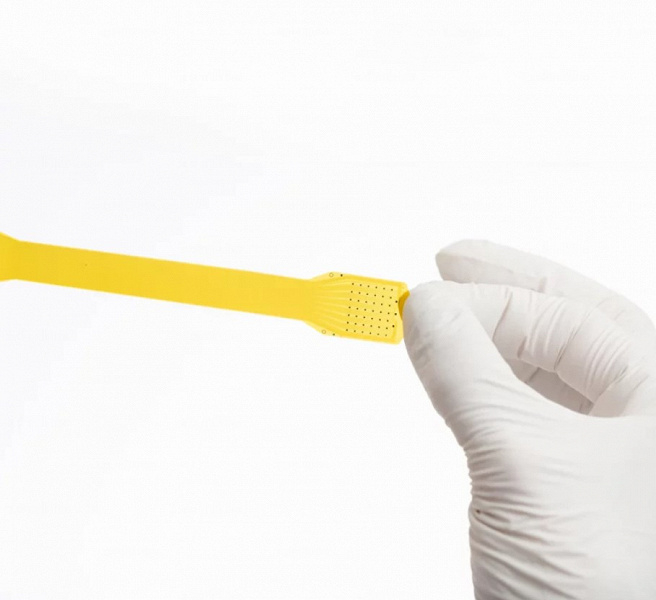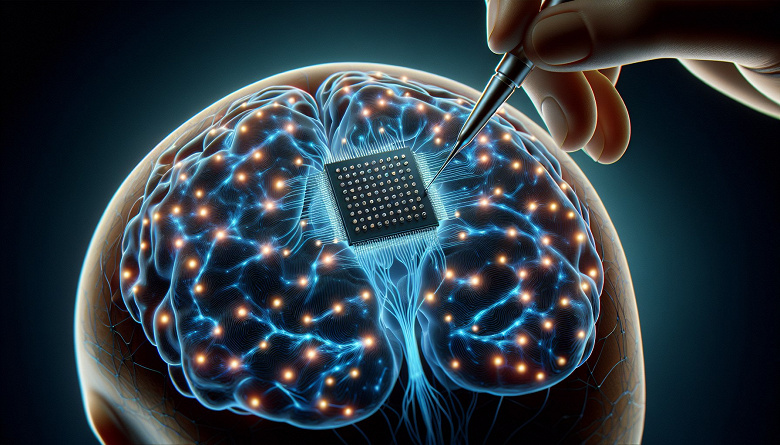Record Number of Electrodes Opens Up New Possibilities Researchers Hope This Technology Will One Day Allow Paralyzed People to Walk and the Blind to See
Precision Neuroscience, a company specializing in brain-machine interfaces, has announced that it has achieved a new world record for the number of electrodes implanted in a living human brain. They managed to place 4,096 electrodes, surpassing the previous record of 2,048 set last year.
The achievement represents a significant advance in the field, allowing neuroscientists to image neuronal activity in unprecedented detail. This opens up new perspectives for understanding the complex processes that occur in the brain and developing methods for decoding thoughts and intentions to control devices or interact with the digital world.
Precision, like many competitors in the BCI (brain-computer interface) field, initially aims to restore speech and movement in patients who have suffered strokes or spinal cord injuries. However, Precision stands out among them because it departs from the principles of one of the most famous BCI companies – Elon Musk's Neuralink.
Precision's founder is neurosurgeon and engineer Ben Rapoport, who previously co-founded Neuralink in 2016. He later left the company and founded Precision in 2021 with three colleagues, two of whom also had ties to Neuralink.
In Episode ??of The Wall Street Journal Podcast «The Future of Everything» on May 3, Rapoport shared that his departure from Neuralink was motivated by safety concerns over the company's more invasive BCI implants.
Rapoport believes that «safety is of paramount importance» for the implementation of neural interfaces from research to medicine. «For a medical device, safety often means minimal invasiveness», — he added. Rapoport noted that in the early development of BCI, including the use of the Utah Array, «there was an assumption that to obtain informative data from the brain it was necessary to penetrate the brain with tiny needle electrodes».
Utah Array — it is a type of brain implant developed at the University of Utah. It consists of 100 or more microelectrodes that are implanted in the brain. These microelectrodes can record the electrical activity of neurons and stimulate them. The Utah Array is being used to study brain function and develop new treatments for neurological diseases. For example, to develop brain-computer interfaces that allow paralyzed people to control prosthetics.
«However, such technologies have a drawback — they cause some damage to the brain when injected. I was confident that it was possible to obtain informative data from the brain without damaging it», — Rapoport continued. He explained that Precision was founded on the principles of minimal invasiveness, scalability and safety.
Neuralink's current BCI device has 1,024 electrodes on 64 wires that are implanted into the brain using a surgical robot. In the first patient to receive the implant, wires were inserted into the brain tissue to a depth of 3 to 5 mm. However, several weeks after surgery, 85% of these wires had become disconnected from the patient's brain, and some electrodes were deactivated due to misalignment. According to plans, Neuralink plans to implant wires deeper — by 8 mm — on his second patient, and the US Food and Drug Administration allegedly approved the procedure. Utah Array penetrates the brain to a depth of 1.5 mm.

The Precision BCI device differs from other neural interfaces in its minimally invasive approach. It does not penetrate the brain, but sits on its surface. It consists of one or more thin films containing 1024 electrodes embedded in a grid structure. Each film is about one-fifth the thickness of a human hair. The modular design of the device allows multiple films to be added to each unit.
Implantation is accomplished through a minimally invasive surgery that involves making a small incision in the skull through which the band-like device is inserted. The film is then placed on the surface of the brain. A processing unit that collects data from the electrodes is placed between the skull and scalp. The device can be removed by lifting the film off the surface of the brain without causing damage to the brain.
In April, a team of neurosurgeons from Mount Sinai Health System implanted a Precision device with four electrode-containing films (4,096 electrodes in total) into a patient’s brain following surgery to remove a benign brain tumor. During the surgery, Precision researchers successfully recorded detailed neuronal activity over an area of about 8 square centimeters of the brain’s surface.
According to CNBC, whose representative was present at the surgery, the implant trial marked the 14th time Precision has implanted a device in a human brain. The company plans to commercialize its first device in 2025.

